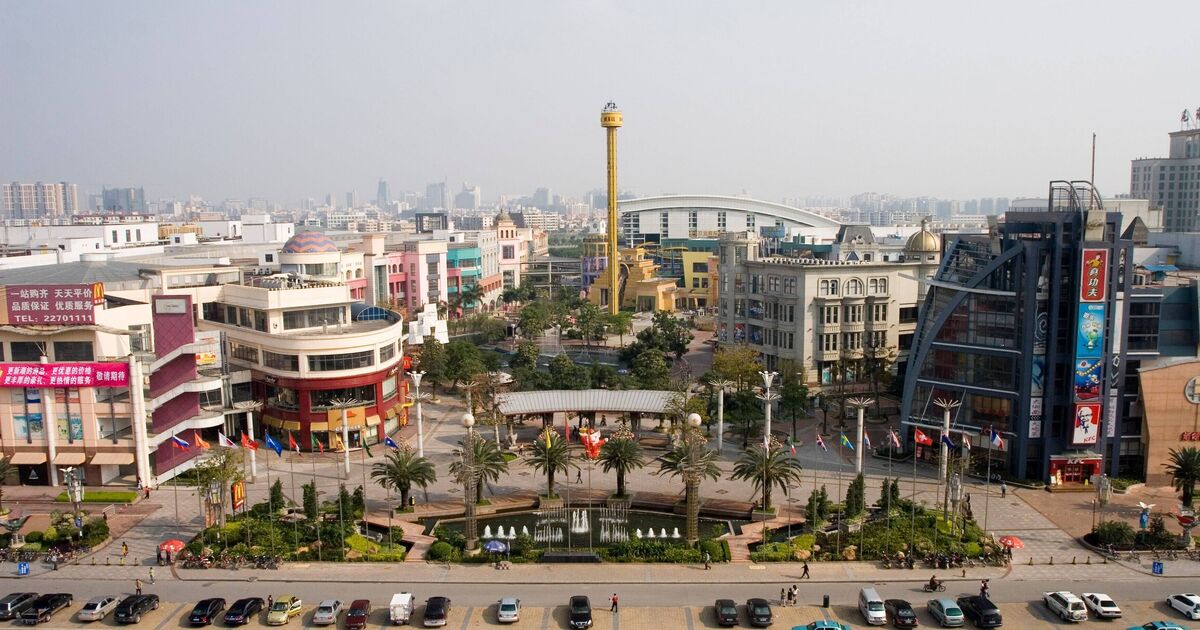
The huge shopping centre was built with a theme park and canals (Image: Bloomberg, Bloomberg via Getty Images)
A shopping centre designed to be the “biggest in the world” now sits mostly empty. Constructed with over 7million square feet of space, the mall features fake canals, a rollercoaster, and room for more than 2,000 shops.
The New South China Mall in Dongguan was anticipated to be the “busiest” in the world when it opened its doors in 2004. Yet, footage from within the building reveals vast expanses of vacant retail units. The shopping centre was conceived like a “small city” with themed sections based on Paris, Venice, and even California, reports the Mirror.
Read more: Forensic doctor’s harrowing update on girl, 3, found dead on Greece beach
Read more: Sunbed wars explode as tourists caught trampling hotel staff at Majorca pool

Empty shops in the South China Mall in 2024 (Image: Wiki Commons)
Visitors could navigate around on gondolas or even visit the enormous cinema. According to the Built to Collapse documentary series, the mall was conceived to draw affluent customers from neighbouring cities.
It was characterised as a “bold” and “exciting” venture. The location however is said to be part of the reason why the mall has struggled over the years.
Built to Collapse explains: “The city of Dongguan is full of factory workers and low income families, not the wealthy shoppers the mall was trying to attract.
“On top of that, the mall was built far from busy areas. It didn’t have good public transport and even people living in the city found it hard to get there.”

Inside the South China Mall (Image: Wiki Commons)
In 2008, it was predicted that around 99 per cent of the mall was left empty, leading to it being dubbed a “ghost mall”.
The shopping centre underwent a huge renovation in 2015 and saw an uplift in occupancy. However, when YouTuber Nico explored the venue last year, she discovered that whilst certain sections of the shopping centre were “thriving,” other areas were facing difficulties.
She uncovered that portions of the upper levels remained under renovation. Nico and her husband Jack also discovered the theme park had closed during their visit, with a notice explaining the operator’s lease had run out.
Jack remarked: “That’s such a wounder. If we’d come just a few weeks before we could have gone on the train track, we could have gone on the go-karts, we could have gone and stroked the dinosaur.”

The South China Mall was the largest in the world when it opened up (Image: Michael Lassman/Bloomberg via Getty Images)
The couple also encountered issues with the mall’s position, describing it as a “ballache” to reach from nearby Guangzhou. Nico added: “It’s nowhere near any public transport and Shenzhen and Guangzhou have quite a few malls anyway, so why would people come this far?”.
Nico says she had heard the $1.31bn mall had witnessed a surge in occupancy but discovered a contrasting reality during her trip.
She explained: “I did read that this mall is almost at full capacity but I think that’s a bit of BS because there are a lot of shops and empty retail spaces, especially in the second and third floor of this building. But, on the ground floor though, that is thriving and there’s loads and loads of stuff down there.”

Shops in the South China Mall (Image: Wiki Commons)
Nico says the choice to shift away from luxury outlets towards businesses that could be supported by the local community made it “more appealing” for residents in Dongguan, such as nail bars and smaller retailers. The South China Mall, the fifth-largest shopping centre globally, was the brainchild of instant noodle tycoon Hu Guirong.
Currently, the Iran Mall in Tehran holds the title for the world’s largest shopping centre, boasting over 3,410,000 sq ft of retail space.
Opened in 2018, the Iran Mall houses more than 2,500 shops and has parking facilities for approximately 20,000 vehicles.

